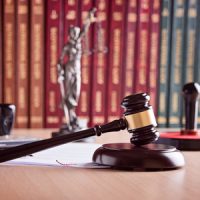Family of Teen Who Died in Crash Sues Tesla

The family of a teen who died in a fiery crash has filed a wrongful death lawsuit against Tesla. One bump in the road, however, is that the National Transportation Safety Board (NTSB) has ruled that the primary cause of the crash was that the teen was driving 116 miles per hour. His father and the lawsuit he has filed against Tesla claims that the crash was still survivable.
High school senior Barrett Riley and his passenger, 18-year-old Edgar Martinez both died after Riley lost control of the vehicle. The Tesla jumped a curve and careened into a wall, bounced off that, and hit a second wall when it burst into flames.
The cause of the car bursting into flames appears directly related to the Tesla’s lithium-ion battery. The lithium-ion batteries that power Teslas, laptops, and mobile devices have one distinct flaw. Under certain conditions, the batteries can burst into flames.
It was determined by a medical examiner that Riley, the driver, most likely succumbed to injuries related to the fire and managed to survive the impact of the crash. His passenger, however, died from a combination of burns and blunt-force trauma sustained during the accident.
Can the Family Win This Lawsuit Against Tesla?
They definitely have a solid case. Yes, the driver of the car was probably doing twice the speed limit and that was the first cause in the chain of causes that ultimately led to the death of himself and his passenger, but if the crash was survivable as the plaintiffs claim, then the plaintiffs still have a lawsuit against Tesla.
In point of fact, this is not the first incident of a Tesla vehicle bursting into flames. Nor is it the first incident of a lawsuit being filed against Tesla related to burn injuries suffered after a lithium-ion battery explosion.
Tesla, in its defense, maintains that no car would have been able to withstand a crash at 116 mph. This is a significant argument because if Tesla can prove that other vehicles that do not operate on lithium-ion batteries would still have exploded, they would have successfully proven that there is no safer alternative on the market. However, Tesla’s argument is likely purely speculative and intended to distract from the fact that the ultimate cause of the boy’s death was burn injuries sustained from the battery explosion.
On the other hand, the battery explosion is directly related to the events of the crash that were originally caused by the boy’s reckless driving. Does that matter, though?
Yes, it does matter. But probably not as much as you think. In Florida, the law operates on what is known as pure comparative negligence. That means even if someone is 99% responsible for their own injuries, they can file a suit against a party who is 1% at fault. They would only be entitled to recover 1% of their damages, however.
Talk to a Miami Personal Injury Attorney
If you’ve been injured by a defectively operating vehicle, the Miami personal injury attorneys at the office of Alan Goldfarb, P.A. can file suit and recover damages related to your injuries. Call us today for a free consultation.
Resource:
us.hidester.com/proxy.php?u=eJwBjwBw%2F3M6MTM0OiLX3JZ9EJKQGK1WoeLJh6Rw1h2BFbOvfZurbyZhy%2B2WMfZdPOjZTjiENh1ZbY3eHwjwbO%2F0m4e5d0s4Z43ToUlUbn6JgTN77ZzLLKfS2bBZEfprwD7hpC0YuKADdd307svBYfER3WIth%2Bfvy%2BgEtMdKmNaWGf0kUV2cbu7pfxiQO%2BLAPRrlHCI7TxdJ4w%3D%3D&b=7&f=norefer
https://www.goldfarbpa.com/self-driving-cars-pose-interesting-liability-questions/
